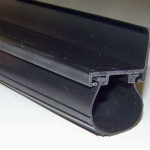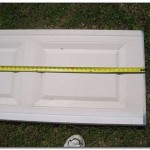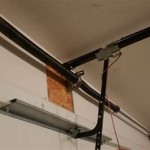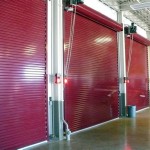How to Get a New Garage Door Opener
A garage door opener is a motorized device that automates the opening and closing of a garage door. It significantly enhances convenience and security, eliminating the need for manual operation. When upgrading, replacing a malfunctioning unit, or installing a new garage, selecting and installing a garage door opener requires careful consideration of various factors.
This article provides a comprehensive guide on how to get a new garage door opener, covering the different types available, key considerations for selecting the right model, and the installation process. It also addresses essential safety measures and maintenance tips to ensure optimal performance and longevity.
Understanding Different Types of Garage Door Openers
Garage door openers come in various types, each with its own mechanism, advantages, and disadvantages. Choosing the right type depends on factors like budget, noise level, garage size, and desired features. The primary types of garage door openers are chain drive, belt drive, screw drive, direct drive, and jackshaft openers.
Chain Drive Openers: Chain drive openers are the most common and generally the least expensive type. They utilize a metal chain to move the trolley, which in turn opens and closes the garage door. While durable and reliable, they can be noisy, making them less suitable for garages attached to living spaces.
Belt Drive Openers: Belt drive openers are similar to chain drive openers, but they use a rubber or polyurethane belt instead of a chain. This makes them significantly quieter than chain drive models. This reduced noise level is a major advantage, especially for homes with attached garages or living spaces above the garage. Belt drive openers tend to be more expensive than chain drive models.
Screw Drive Openers: Screw drive openers operate using a threaded steel rod that rotates to move the trolley. They have fewer moving parts, which can translate to lower maintenance requirements. While generally more durable than chain drive openers, they can be slower and sometimes noisier than belt drive versions. Temperature fluctuations can also affect their performance.
Direct Drive Openers: Direct drive openers, also known as wall-mount openers, are mounted directly on the torsion bar, eliminating the need for a trolley. They operate very quietly and offer a smooth, consistent performance. They are typically more expensive than chain or belt drive openers, but their quiet operation and reliability often justify the cost.
Jackshaft Openers: Jackshaft openers, also referred to as side-mount openers, are mounted on the wall beside the garage door, rather than on the ceiling. They use a system of cables and pulleys to operate the door. This type is ideal for garages with high or obstructed ceilings, or for those looking to free up overhead space. They are typically more expensive and may require professional installation due to their complexity.
Key Considerations When Selecting a Garage Door Opener
Selecting the right garage door opener involves considering several factors to ensure it meets specific needs and garage requirements. These factors include the garage door's weight and size, the opener's horsepower, safety features, smart home compatibility, and budget.
Garage Door Weight and Size: The weight and size of the garage door are crucial factors in determining the appropriate horsepower of the opener. Heavier and larger doors require openers with greater horsepower to operate smoothly and reliably. Using an opener with insufficient horsepower can lead to premature wear and tear, or even failure of the opener.
Horsepower: Garage door openers typically come in horsepower ratings of 1/2 HP, 3/4 HP, and 1 HP. For standard residential garage doors, a 1/2 HP opener is usually sufficient. However, for heavier doors made of solid wood or insulated materials, a 3/4 HP or 1 HP opener may be necessary. Consulting the manufacturer's specifications or a professional installer can help determine the appropriate horsepower for a specific door.
Safety Features: Safety is paramount when selecting a garage door opener. Modern openers are equipped with several safety features designed to prevent accidents and injuries. These features include:
Photo-eye sensors: These sensors are located near the bottom of the door opening and create an invisible beam. If the beam is interrupted while the door is closing, the opener automatically reverses the door to prevent it from closing on an obstruction such as a person, pet, or object.
Safety reversal: This feature detects resistance while the door is closing. If the door encounters an obstacle, it automatically reverses direction.
Manual release: In case of a power outage, a manual release cord allows the door to be opened and closed manually.
Smart Home Compatibility: Many modern garage door openers offer smart home compatibility, allowing them to be controlled remotely via a smartphone app or voice commands. These features can include:
Remote monitoring: The ability to check the status of the garage door (open or closed) from anywhere.
Remote control: The ability to open and close the garage door remotely.
Integration with smart home platforms: Compatibility with platforms such as Amazon Alexa, Google Assistant, and Apple HomeKit.
Activity logs: Recording the times when the garage door is opened and closed.
Budget: Garage door openers vary significantly in price, depending on the type, horsepower, features, and brand. Setting a budget before starting the search can help narrow down the options and prevent overspending. It is important to consider the long-term costs of owning and maintaining the opener, including potential repairs and energy consumption.
The cost of professional installation should also be factored into the budget. While some homeowners may choose to install the opener themselves, professional installation ensures proper setup, safety, and warranty compliance. It is prudent to obtain quotes from multiple installers to compare prices and services.
Installation Process and Safety Measures
Installing a garage door opener is a complex task that requires careful attention to detail and adherence to safety guidelines. While some homeowners with experience in home improvement projects may choose to install the opener themselves, professional installation is generally recommended to ensure proper operation and safety.
DIY Installation Steps (with emphasis on safety): If attempting a do-it-yourself installation, follow these general steps:
Preparation: Before starting, carefully read the manufacturer's instructions and gather all necessary tools and materials. Ensure the garage door is properly balanced and in good working condition. Disconnect the existing opener, if applicable, and unplug it from the power source.
Mounting the Opener: Securely mount the opener unit to the ceiling joists using appropriate hardware. Ensure the mounting is stable and level. If necessary, reinforce the ceiling joists with additional supports.
Installing the Rail: Attach the rail to the opener unit and the header bracket above the garage door. Ensure the rail is aligned properly and securely fastened.
Attaching the Trolley: Connect the trolley to the rail and attach the door arm to the trolley and the garage door. Ensure the door arm is adjusted correctly to allow for smooth and full travel of the door.
Wiring: Connect the wiring according to the manufacturer's instructions. This typically involves connecting the opener to a power outlet and wiring the safety sensors. Ensure all wiring connections are secure and properly insulated.
Installing Safety Sensors: Mount the photo-eye sensors near the bottom of the door opening, ensuring they are aligned and properly wired. Test the sensors to ensure they are functioning correctly. Without functional safety sensors, the opener is unsafe to operate.
Programming and Testing: Program the opener according to the manufacturer's instructions. Test the opener to ensure it opens and closes smoothly and that the safety features are working correctly. Adjust the travel limits and force settings as needed.
Professional Installation: Professional installers have the experience, tools, and knowledge to install garage door openers safely and efficiently. They can ensure proper alignment, wiring, and programming, as well as address any potential issues that may arise during installation. Furthermore, professional installation often comes with a warranty, providing added peace of mind.
Safety Measures: Regardless of whether the installation is done DIY or professionally, the following safety measures should be observed:
Disconnect Power: Always disconnect the power to the opener before starting any installation or repair work.
Wear Safety Gear: Wear appropriate safety gear, such as safety glasses and gloves, to protect against potential hazards.
Follow Instructions: Carefully follow the manufacturer's instructions and safety guidelines.
Test Safety Features: Thoroughly test all safety features, including the photo-eye sensors and safety reversal, to ensure they are functioning correctly before operating the opener.
Keep Clear: Keep children and pets away from the garage door during installation and operation.
Maintenance Tips for Optimal Performance and Longevity
Proper maintenance is essential for ensuring the optimal performance and longevity of a garage door opener. Regular maintenance can help prevent costly repairs and extend the lifespan of the opener. Key maintenance tasks include lubrication, inspection, and testing.
Lubrication: Regularly lubricate the moving parts of the opener, such as the chain, belt, screw, or trolley, depending on the type of opener. Use a garage door lubricant specifically designed for this purpose. Avoid using WD-40 or other general-purpose lubricants, as they may not provide adequate lubrication and can attract dirt and debris. Lubricate the garage door springs and hinges as well.
Inspection: Periodically inspect the garage door opener and its components for any signs of wear, damage, or loose connections. Check the chain or belt for proper tension and adjust as needed. Inspect the wiring for frayed or damaged wires. Tighten any loose nuts or bolts. Ensure the safety sensors are clean and properly aligned.
Testing: Regularly test the safety features of the opener, including the photo-eye sensors and safety reversal. To test the photo-eye sensors, place an object in the path of the beam while the door is closing. The door should reverse direction immediately. To test the safety reversal, place a 2x4 board on the floor in the path of the door while closing. The door should stop and reverse direction upon contact with the board. If the safety features are not functioning correctly, consult a professional for repair or replacement.
Professional Service: Schedule regular professional maintenance for the garage door opener. A professional technician can perform a thorough inspection, lubrication, and adjustment of all components. They can also identify and address any potential issues before they escalate into major problems. Professional service can help extend the lifespan of the opener and ensure its safe and reliable operation.
By understanding the different types of garage door openers, considering key selection factors, following proper installation procedures, and adhering to regular maintenance practices, homeowners can ensure they get a new garage door opener that meets their needs and provides years of reliable service.

Diy Garage Door Opener Replacement

Adam S Door Systems Garage Opener Features To Look For

Garage Door Opener Installation Lowe S
6 Best Garage Door Openers

Your Guide To Buying A New Garage Door Opener Hostetler Askew

Garage Door Opener Installation New Motors Systems In Nashville

How To Change Liftmaster Garage Code A Step By Guide

Replacing Commercial Garage Doors And Openers Overhead Door Company

Comprehensive Steps To Replace Your Garage Door Opener

Guide To Garage Door Opener Sizes What Consider








